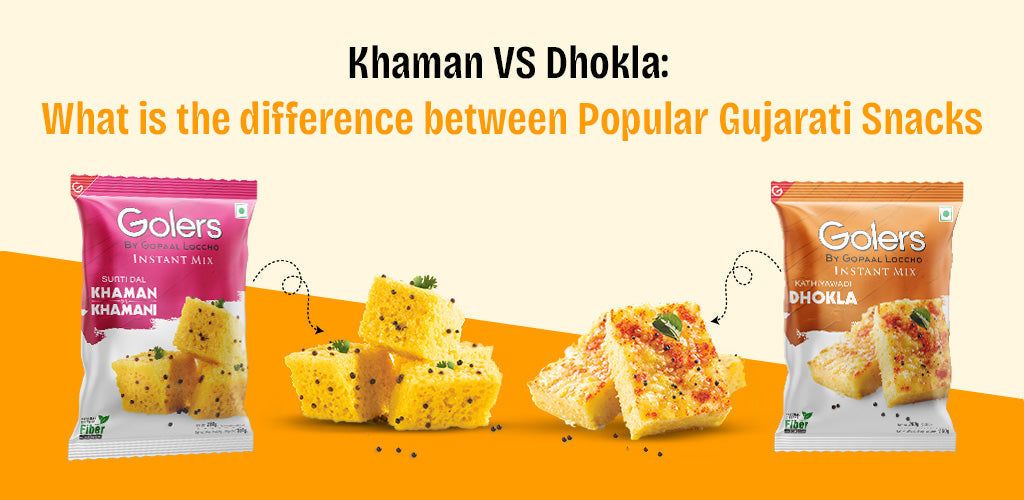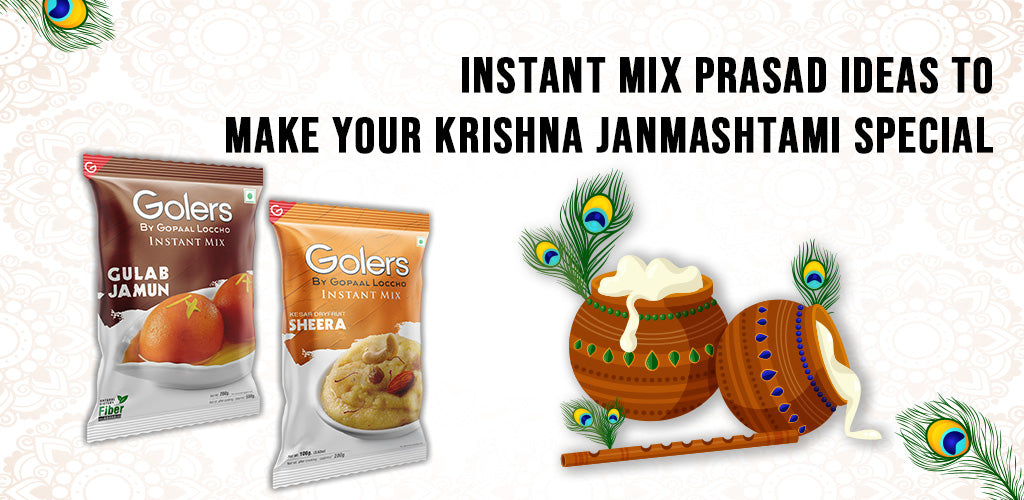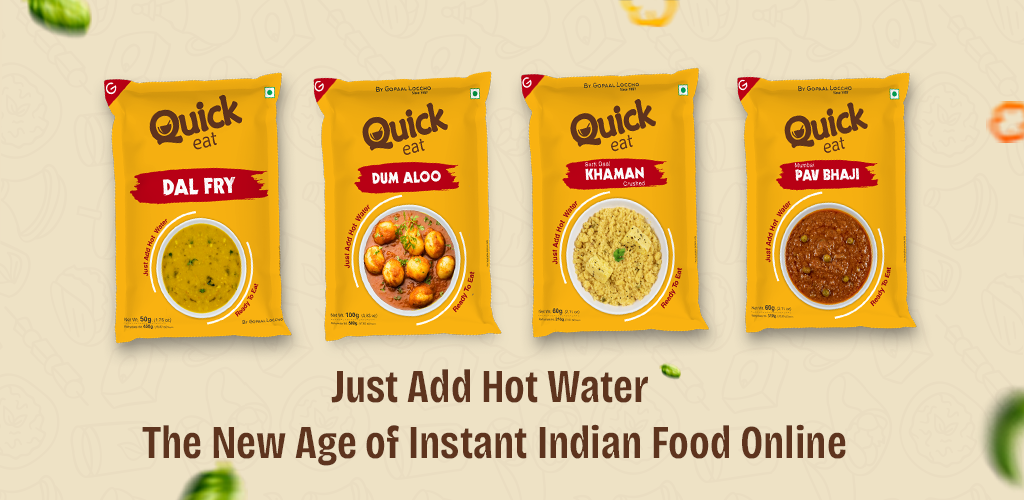India is a land of flavours, and Gujarat is the state that symbolises the saying “snacks o’clock is all day”. Each mouthful of anything from crisp fafdas to luxurious sheera tells something to every bite. However, few things are as confusing as Khaman Dhokla. The Non-Gujarati often term instant mix Khaman Dhokla together, hence there’s no doubt that they are interchangeable, but not exactly the same.
Nearly all Indians have either had one or believed they had. “Yeah, I love Dhokla!” someone in Delhi or Mumbai might respond or point to what a Gujarati would immediately call instant khaman. What caused this confusion, then? What is a true distinction? And it would be possible with golers Instant Mix?
Let’s explore the delicious specifics of Khamva VS Dhokla, the difference between these popular Gujarati snacks.
Really, what's The Difference?
At first glance, they may seem similar—yellow, fluffy, square-cut, tempered with mustard seeds and curry leaves. But that’s where the similarity ends.
At first glance, they seem like a similar little bite of: yellow, fluffy, square-cut, tempered with curry leaves & mustard seeds. But that’s where the similarity ends here.
|
Features |
Khaman |
Dhokla |
|
Base Ingredient |
Besan (gram flour) |
Rice with Urad (Chickpea Flour) |
|
Batter Process |
Instant |
Need Fermented |
|
Texture |
Ultra-soft, fluffy, light |
Soft, grainy, slightly firm |
|
Taste |
Sweet & Tangy |
Mildly sour & savoury |
|
Colour may vary |
Bright Yellow |
Pale yellow or ivory |
|
Cooking Time |
Quick |
Pre-plannning |
|
Common Forms |
Nylon Khaman, Sev Khamani |
Sandwich Dhokla, White Dhokla, Rava Dhokla |
In short, Instant khaman mix is quick, spongy and modern, while Dhokla is traditional, fermented and rooted in Gujarati rooted in heritage but with Golers its the matter of minutes to prepare just bring our Instant Dhokla Mix.
Why Do Most Indians Call Khaman "Dhokla"?
As a result, Khaman became the ‘face’ of Dhokla, even though it's a completely different dish.
Over a decade ago, the mislabeling of culture has been increased. This is the reason:
- Outside of Gujarat, nylon khaman instant mix is more readily available. Restaurants, caterers, and even food vendors on trains love it since it is quick and simple to prepare.
- Most people associate “Dhokla” with bright yellow appearances; these powerful visuals create an impression stucks.
- Marketing error, to make Instant khaman Mix more relatable throughout India, many snack shops, ready-to-eat packets, and even large corporations refer to it as “Dhokla”.
- Lacking local knowledge, Non-Gujarati hardly ever get to simple, real Dhokla, which is fermented rice.
Myth-Busting: Common Misconceptions
Let’s tackle some common misconceptions regarding these well-known snacks:
Myth 1- Dhokla and Khaman are the same
Fact- Their components, flavours, methods of preparation and objectives vary.
Myth 2- Dhokla is also yellow.
Fact- Off-white to pale yellow is the truth of the dhokla. Formed due to rice and dal.
Myth 3- The original dish is Khaman.
Fact- The Dhokla is deeply rooted and a staple of Gujarati cooking. But Khaman is a more recently developed dish from the same family of process cooking.
Myth 4- Is Dhokla an unhealthy snack?
Fact- Dhokla is recognised as a healthy snack. Even though many Gujaratis have it as an instant breakfast mix meal too, because it has low calories and is full of nutrients.
How to Spot the Difference in One Glance
“If it's bright yellow, fluffy like a sponge cake, and melts instantly—it’s Khaman.
If it’s pale, slightly sour, and more filling—it’s Dhokla.”
Bonus tip: If your snack was ready in under 15 minutes, it's only possible with Golers. I know it is strange but true, when it comes to your home, you can experience it.
A Taste of Culture: Where They Belong
Instant Dhokla is offered at festivals, poojas and even as a part of traditional thalis in a typical Gujarati home. It is valued for its homey vibe and fermented healthy advantages.
Whereas, instant khaman mix is your go-to snack for late-night hunger pangs, picnics and visitors. It’s brighter, fluffier and frequently regarded as more “party-friendly”
For Gujaratis, making a mistake would be like comparing Idli with white dhokla instant mix and dosa, which are both delicious but not the same!
Why It Matters
You know that the food is more than just a flavour, its identity, heritage, and recollection of memory. Maintaining authenticity is crucial in this fast-forward phase of the era. So, giving these melas the cultural respect they deserve is more important than identifying faults with the difference between Khamana & Dhokla.
Imagine going somewhere overseas and you notice that someone refers to all Indian food as “curry” only. Sounds strange, doesn’t it? The Gujaratis feel the same way when Khaman is mistakenly called as Dhokla.
The Last Debate: Know What You’re Eating
Whether you’re a foodie, snack enthusiast, or proud Gujarati, understanding the distinction between Khaman and Dhokla isn’t just information a savoury catch to you. The next time someone refers to that soft, yellow square as an Instant Dhokla at a gathering or restaurant, smile pleasantly and perhaps ask, “You mean Khaman or Dhokla, right?” Because when it comes to snacks, doing it well makes them taste even better.




Leave a comment
This site is protected by hCaptcha and the hCaptcha Privacy Policy and Terms of Service apply.